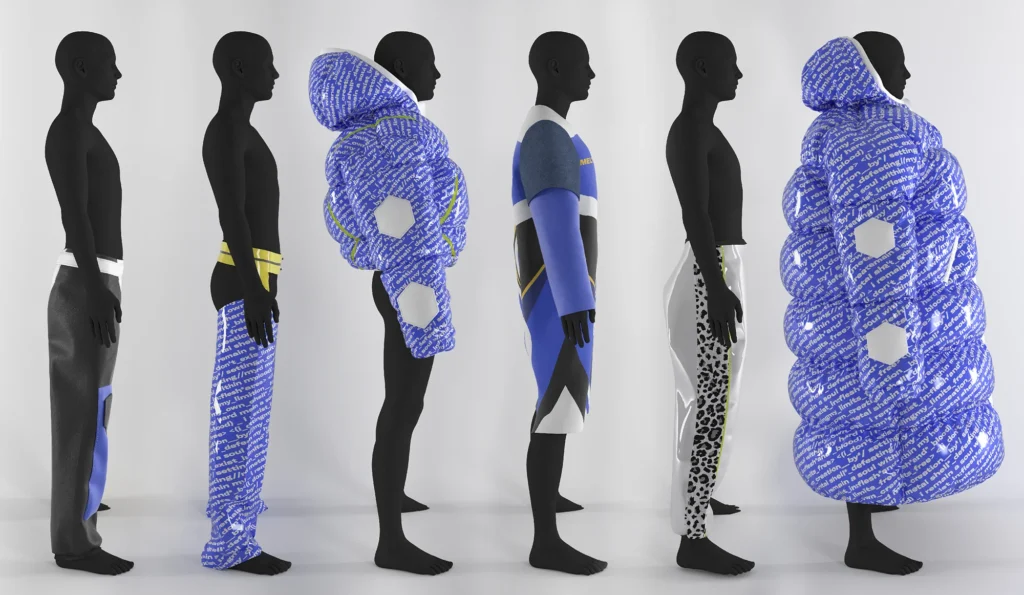Digital Fashion, also known as virtual clothing, is revolutionizing the fashion industry by offering unique and innovative ways to experience and showcase style. With the advancement of technology, virtual clothing allows individuals to try on and wear digital garments through augmented reality and virtual reality platforms. This new trend is transforming the way people perceive and interact with fashion, as it offers endless possibilities for customization and personalization. Digital Fashion How Virtual Clothing is Transforming Style has become a hot topic in the fashion world, as it challenges traditional notions of clothing and opens up new avenues for creativity and expression.
The concept of digital fashion has sparked curiosity and interest among fashion enthusiasts and tech-savvy individuals alike. Virtual clothing offers a sustainable and eco-friendly alternative to traditional fashion, as it reduces the need for physical production and waste. Furthermore, it provides opportunities for brands and designers to experiment with avant-garde designs and materials that may not be feasible in the physical realm. As a result, Digital Fashion How Virtual Clothing is Transforming Style has become a focal point of discussion in the industry, with many speculating about its potential impact on consumer behavior and the future of fashion retail.
The Rise of Virtual Clothing
In recent years, the fashion industry has seen a significant rise in the popularity of virtual clothing. Virtual clothing refers to garments and accessories that are designed to be worn by digital avatars in virtual environments such as video games, social media platforms, and virtual reality experiences. This trend has been driven by the increasing integration of technology into everyday life and the growing importance of digital identity and self-expression.
Virtual clothing offers a new way for individuals to express their personal style and creativity in the digital world. It allows users to curate unique and innovative looks for their online personas, blurring the lines between physical and digital fashion. As a result, virtual clothing has become a novel form of artistic expression and a means for fashion brands to connect with consumers in the digital sphere.
The Impact on Fashion Industry
The emergence of virtual clothing has had a profound impact on the fashion industry, influencing the way brands design, market, and sell their products. Fashion designers are now tasked with creating digital garments that not only look visually appealing but also move and interact realistically within virtual environments. This has led to a new set of design considerations and technical challenges, prompting designers to explore innovative materials and techniques.
Furthermore, the rise of virtual clothing has opened up new avenues for fashion marketing and retail. Brands are now partnering with virtual platforms and gaming companies to offer exclusive virtual fashion collections and experiences. This has allowed fashion brands to reach a wider audience and engage with consumers in immersive and interactive ways, shaping the future of fashion marketing and retail.
The Role of Sustainability
Virtual clothing has also sparked discussions about sustainability within the fashion industry. As the production and distribution of physical garments have significant environmental impacts, virtual clothing presents a more sustainable alternative. By embracing virtual fashion, individuals can reduce their carbon footprint and contribute to the movement towards a more sustainable fashion industry.
Additionally, virtual clothing offers a way for fashion brands to experiment with innovative and sustainable materials without the constraints of physical production. This has the potential to drive forward sustainable practices within the industry and inspire new approaches to eco-friendly fashion design.
The Future of Virtual Fashion
Looking ahead, virtual clothing is poised to continue shaping the future of fashion and digital experiences. As technology advances, the boundaries between physical and virtual fashion are likely to become even more blurred, offering new opportunities for creativity and self-expression in the digital realm. Virtual fashion shows, digital styling tools, and virtual wardrobe platforms are just a few examples of the innovations that may become commonplace in the future.
Moreover, as virtual reality and augmented reality technologies become more accessible, the integration of virtual clothing into everyday life is expected to grow. This could lead to a shift in the way individuals perceive and interact with fashion, ultimately transforming the traditional notion of style and clothing.
| Topic | Description |
|---|---|
| What is Virtual Clothing? | Virtual clothing refers to clothing designs that are created digitally and can be worn on virtual platforms, such as social media, gaming, and virtual reality. |
| How is it Transforming Style? | Virtual clothing is transforming style by allowing individuals to express themselves creatively through digital fashion, without the limitations of physical clothing. |
| Benefits of Virtual Clothing | Virtual clothing offers sustainability, customization, and accessibility, as well as the ability to experiment with different styles and trends. |
| Challenges | Challenges of virtual clothing include the need for realistic virtual fitting and the potential impact on the traditional fashion industry. |
Digital Fashion How Virtual Clothing is Transforming Style
Virtual clothing is a digital creation that is worn on virtual platforms. It is transforming style by offering creative expression, sustainability, and customization. While it presents challenges, it has the potential to revolutionize the fashion industry.

